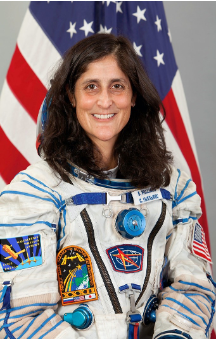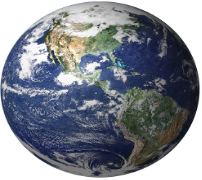NCERT Solutions for Class 5 EVS Chapter 11 Sunita in space
Find a pdf of NCERT Solutions for Class 5 EVS Chapter 11 Sunita in space prepared by expert teachers. All the questions asked in the exercise of Sunita in space are solved with the required details.
A Brief Introduction to Chapter 11 Sunita in space
Chapter 11 Sunita in space- In this chapter, we will learn about space, the world, the moon, and the stars. What kind of problems, and fun are in space? We will learn about vehicles used for going into space called spaceships, the globe model of the earth, and gravity. In the last, we came to know, how the moon changes its shape during the festivals like eid, Diwali, Holi etc
Find pdf of NCERT Solutions for Class 5 EVS Chapter 11 Sunita in space
Page No 100: Question What do you think?
· If the earth is round like a globe, how is it that we do not fall off?
· Do the people in Argentina stand upside down?
Answer:
Disclaimer: This section aims to enhance the imaginative skills of the students. Considering the sustenance of this process, the answer to the question has not been provided.
Page No 101: Question Look at the photogram:
· Can you think why Sunita’s hair was standing?

· Look at Sunita’s photographs and the dates written on each of them. Write what all is happening and when?

Answer:
· Sunita’s hair was standing in the spaceship as she was very much above the earth. There is no pulling force in the space to make everything come down. Everything floats in the space.
· Sunita with her other friends started their onward journey on 9-12-2006 in their spaceship. There are two photographs dated 11-12-2006. The first one shows Sunita and her friend floating in the spaceship. The second photograph shows food packets flying in the spaceship. The photograph dated 13-12-2006 shows Sunita’s hair not falling down while she continues with her work with ease. The photograph dated 16-
12-2006 shows that Sunita has come out of the spaceship and floating in the space.
Page No 103: Question Classroom becomes a:
Close your eyes. Imagine that your class is a spaceship.
· Zooo…m – in 10 minutes you have entered in space. Your spaceship is now going around the earth. Now say:
– Are you able to sit at one place?
– What about your hair?
– Oh, look … where are your bags and books going?
– And what is your teacher doing? Where is her chalk?
– How did you eat your food during the break? How did you drink water? What happened to the ball that you threw up?
· Act out or draw the scene.
Answer:
Disclaimer: This section aims to enhance the imaginative skills of the students. Considering the sustenance of this process, the answer to the question has not been provided.
Page No 105: Question Look at This Photogram:

· Can you see India?
· Can you recognise any other place?
· Where is the sea?
· Do you find anything similar between the globe and this picture of the earth? In what ways are they different?
· Do you think Sunita could make out Pakistan, Nepal and Burma separately, when she saw the earth from space?
Answer:
· Yes, we can see India. Its shape is quite distinct from other countries.
· Yes, we can recognise the huge landmasses called continents. These are: Asia, Africa, Europe, North America, South America, Australia and Antarctica.
· The portion of the earth’s photograph that is looking blue is all sea water.
· Globe and earth are similar in the manner that both of them are round in shape. They are different in the following manner:
|
Picture shown |
Globe |
|
It is a real photograph of the earth. |
It is a model of the earth. |
|
There is no division line separating the countries and states. |
There are division lines separating the countries and states. |
· I think Sunita could not have made out Pakistan, Nepal and Burma separately, when she saw the earth from space. This is because she could not see the lines of division between the countries from space.
Page No 106: Question Look at the Map Give:
– Can you find the state in which you live? Write its name on the map.
– Which are the states next to the state you live in?
– Have you been to any other state?
– Shahmir thinks that there are lines drawn on the ground between the states. What do you think?
Answer:
Disclaimer: This question has to be answered by students keeping in mind their dwelling places. Hence, the same can vary from one student to another. Considering this, the answer to the question has not been provided.
Question Think:
· Do you think the moon is flat like the coin or round like a ball?
· Look at the moon tonight and draw what it looks like. Look and draw again after one week, and then after 15 days.
|
Today’s Date |
Date after a week |
Date after 15 days |
Answer:
· Disclaimer: This section aims to enhance the imaginative and surveillance skills of the students. Considering the sustenance of this process, the answer to the question has not been provided.
· Disclaimer: This section aims to enhance the imaginative and surveillance skills of the students. Considering the sustenance of this process, the answer to the question has not been provided.
Page No 107: Question Look at the Table an:
Given below are the times at which the moon rises and sets in Delhi (on the given days).
|
Date |
Time of moonrise (hours : minutes) |
Time of moonset (hours : minutes) |
|
28-10-2007 |
19:16 |
08:50 |
|
29-10-2007 |
20:17 |
10:03 |
|
30-10-2007 |
21:22 |
11:08 |
|
31-10-2007 |
22:29 |
12:03 |
· On 28 October the moon came out at ________minutes past ______o’clock.
· On 29 October the moon came out at ________minutes past______o’clock.
· On 29 October there was a difference of _______hours and ______minutes in the time of the moon rise (as compared to 28 October).
· If you saw the moon rising at 7 pm today, would you see it at the same time tomorrow?
· On 31 October the time of setting of the moon is given as 12:03. Have you ever seen the moon at 12 in the afternoon? Why don’t we easily see the moon or stars during the day?
Answer:
· On 28 October the moon came out at 16 minutes past 7 o’clock.
· On 28 October the moon came out at 17 minutes past 8 o’clock.
· On 29 October there was a difference of 1 hours and 1 minute in the time of the moon rise (as compared to 28 October).
· We would not be able to see the moon rising at the same time tomorrow. There would be at least some difference of few seconds, one minute or more than it.
· Yes, I have seen moon at 12 in the afternoon.
· We don’t easily see the moon or stars during the day because the bright light of the sun does not let the moon visible during the daytime.
Page No 109: Question What we have learnt:
· Why do children always slide down the slide and not slide up? If this slide were there in Sunita’s spacecraft, would children slide like this? Why?
· Why do we see stars mostly at night?
· Looking at earth from the space, Sunita said, “Different countries cannot be seen as separate from here. These lines are on paper. They are made by us.” What do you understand by this?
Answer:
· Children always slide down a slide because the earth has a very powerful pulling force that always pulls things towards it.
· The stars are celestial bodies having light of their own. The sun is also a star. It is the closest star to the earth. During the day time we are not able to see the stars because the sun’s light is very bright and it blocks the other stars.
· When observed from the space, the lines that we see between the countries and states are not visible. These lines that we see on the map are not actually present but are drawn by man for his own convenience.